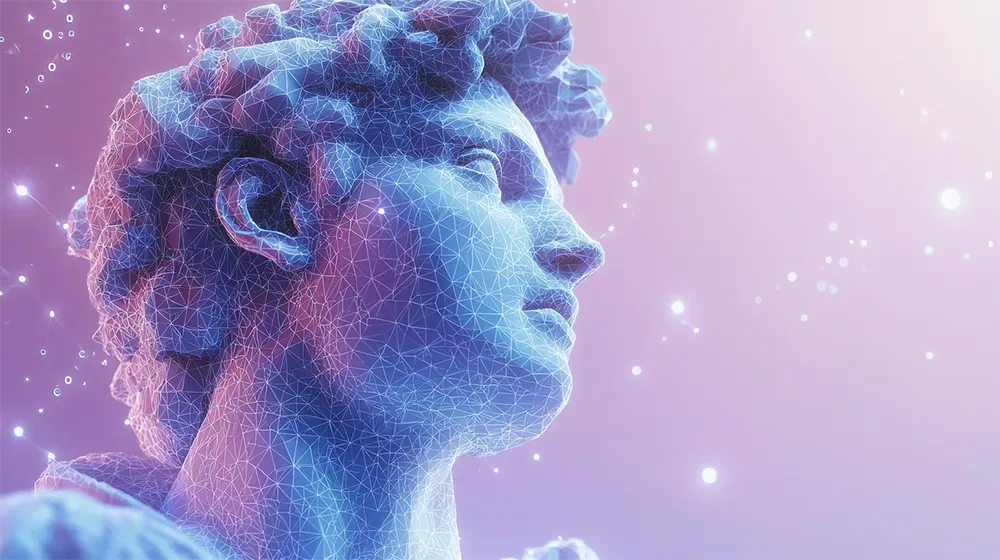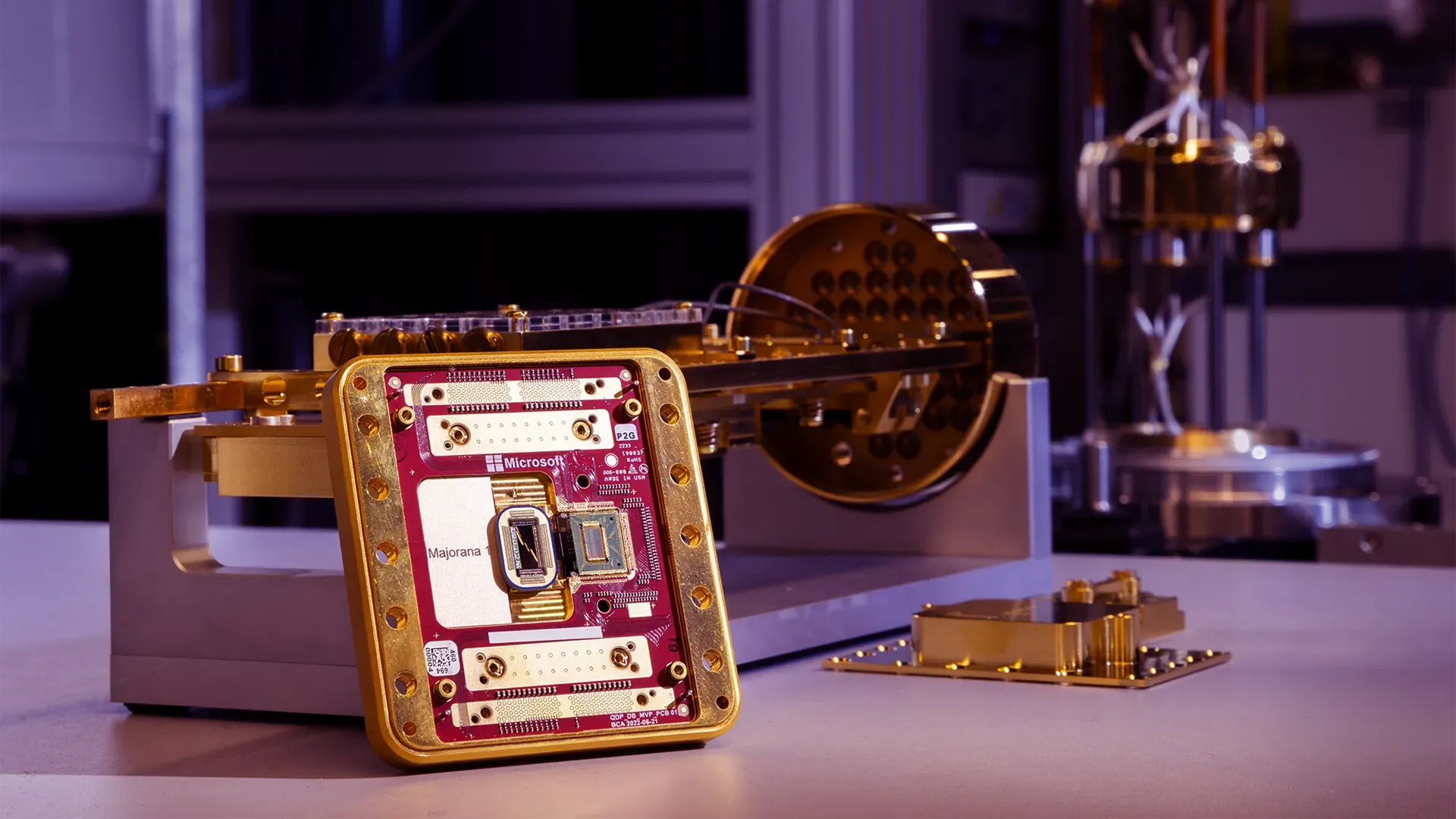Biological Computing: Harnessing Life's Code to Power the Future

Biological computing, the amalgamation of biology and computer science, is reshaping the landscape of scientific inquiry. Imagine the intricacies of living organisms harnessed to process information, solve problems, and revolutionise technology. In this intricate dance between the natural world and computational algorithms, biological computing is unearthing new possibilities that extend far beyond the boundaries of conventional science.
Delving into the historical background, we uncover the roots of this interdisciplinary marvel, tracing its evolution from theoretical concepts to real-world applications. You can imagine a future where diseases are diagnosed swiftly, environmental issues are tackled with precision, and artificial intelligence learns and adapts like never before – all thanks to the power of biological computing.
Biological computing, or biocomputing, refers to a form of computing that uses biological organisms or processes as a primary component or mechanism for storage, processing, and transferring information. It encompasses a broad spectrum of technologies, including DNA computing, molecular computing, and cellular computing.
Yet, amidst the awe-inspiring potential lies a labyrinth of challenges and ethical dilemmas. As we journey deeper, we confront these complexities, exploring the delicate balance between innovation and responsibility. The ethical considerations surrounding genetic manipulation, data privacy, and environmental impact force us to question the boundaries of scientific exploration.
Historical Context
In the mid-20th century, the convergence of biological and computational sciences opened a new chapter in scientific exploration. The rise of electronic computers in the 1940s sparked curiosity about the similarities between these machines and the intricate processes of living organisms. This curiosity led to the conceptualisation of biological computing, a field that sought to harness the inherent computational abilities of biological systems.
The ideas put forth by luminaries like Alan Turing laid the groundwork for this interdisciplinary pursuit. Turing's theoretical framework for computation became a cornerstone, inspiring researchers to explore how biological elements could emulate the principles of computation. This intersection of disciplines set the stage for a wave of experimentation, innovation, and collaboration, laying the foundation for the evolution of biological computing as we know it today.
The Origins of Biological Computing

The journey of biological computing began with the elucidation of DNA's double-helix structure by James Watson and Francis Crick in 1953. This monumental discovery illuminated the molecular basis of genetic information storage and transmission. Building upon this foundation, scientists delved into the possibilities of utilising DNA molecules for computation. The 1970s marked a pivotal moment when Leonard Adleman conducted a groundbreaking experiment. Adleman demonstrated that DNA strands could be manipulated to solve a mathematical problem, showcasing the potential of biological systems as computational tools.
This achievement marked the first practical application of biological computing, setting the stage for subsequent advancements in the field. As researchers delved deeper into the world of nucleic acids and molecular biology, the convergence of biology and computing began to yield innovative solutions to complex problems, propelling the field into an era of rapid progress and transformative discoveries.
Key Milestones and Innovations of Biological Computing
Throughout the evolution of biological computing, several transformative milestones and key innovations have shaped the landscape of this interdisciplinary field, propelling it into new realms of possibility.
Building upon Adleman’s pioneering work, researchers developed sophisticated algorithms that harnessed the unique properties of DNA strands. These algorithms allowed scientists to encode vast amounts of information within DNA molecules and perform complex computations. The most notable achievement was the solution of the Traveling Salesman Problem, a classic conundrum in the field of mathematics and computer science. DNA computing demonstrated its prowess by efficiently finding optimal solutions to this problem, showcasing the computational potential of biological systems.
In parallel, the emergence of synthetic biology marked another significant milestone. Scientists began engineering biological circuits approximately 50 years ago, akin to electronic circuits, using genetic components. These engineered biological circuits, often called genetic logic gates, enabled the creation of complex computational networks within living cells. This innovation paved the way for developing biological computing devices to process information, make decisions, and execute specific tasks. Applications ranged from biosensors capable of detecting environmental pollutants to therapeutic systems for targeted drug delivery within the human body.
Integrating machine learning techniques with biological computing opened new avenues for research and innovation. Algorithms inspired by biological processes, such as neural networks and genetic algorithms, found applications in optimising biological computations and understanding complex biological phenomena. These synergies between machine learning and biological computing not only enhanced the efficiency of computational processes but also deepened our understanding of the intricate mechanisms governing living organisms.
What is Biological Computing

Biological computing is not merely about understanding biological processes; biological computing explores the application of biological principles and systems to computational tasks, leading to innovative solutions in areas such as data storage, optimisation, and problem-solving. Considering biological systems as computational entities, scientists gain insights into the mechanisms that govern life itself. This perspective has opened doors to innovative approaches in areas such as artificial intelligence, data processing, and problem-solving methodologies. Biological computing challenges our traditional notions of computation, inviting us to explore the vast potential embedded within the biochemical intricacies of the natural world.
Explanation of Biological Systems as Computing Entities
Biological systems, from the simplest cells to intricate ecosystems, operate as sophisticated computational entities. Cells, for example, process information through intricate signalling pathways, translating external stimuli into specific biochemical responses.
DNA, the blueprint of life, encodes genetic information in a language of nucleotides, akin to digital code. Proteins, enzymes, and molecular interactions form the basis of cellular computations, orchestrating biological functions with remarkable precision. Decoding these biological algorithms involves unravelling the intricate networks of molecules and understanding how they interact to execute complex tasks.
Recognising biological systems as computing entities not only deepens our understanding of life but also inspires innovative approaches in designing computational models inspired by nature's efficiency and adaptability.
Comparison Between Biological and Traditional Computing
When comparing biological computing to traditional computing, the contrast is striking. Traditional computers rely on electronic circuits, processing information in a linear, sequential manner using binary logic. In contrast, biological systems operate in a parallel, distributed fashion. Cells, for instance, process myriad signals simultaneously, exhibiting immense parallelism. In fact, biological systems display inherent adaptability, adjusting their responses to environmental changes dynamically. This adaptability stands in stark contrast to the rigid programming of traditional computers.
Exploring the synergy between these distinct computational paradigms offers a wealth of opportunities. Integrating the parallelism and adaptability of biological systems with the precision of electronic computing can potentially revolutionise fields like machine learning, optimisation algorithms, and data processing, enabling solutions to problems previously deemed intractable.
Exploration of DNA Computing and Its Applications
DNA computing, a groundbreaking branch of biological computing, capitalises on the storage capacity and parallelism inherent in DNA molecules. Researchers manipulate DNA strands to perform computations, allowing for the efficient solution of complex problems. From cryptographic puzzles to optimisation challenges, DNA computing has demonstrated its prowess in tackling computationally intensive tasks.
In bioinformatics, DNA computing finds applications in analysing genetic sequences, predicting protein structures, and understanding evolutionary patterns. Also, its potential for massive parallelism has paved the way for advancements in drug discovery, enabling researchers to explore vast chemical spaces efficiently. As technology advances, DNA computing continues to evolve, promising revolutionary solutions in fields that demand unprecedented computational power and efficiency.
Introduction to Quantum Biology and Its Role in Biological Computing
Quantum biology, a burgeoning field at the intersection of quantum physics and biology, explores quantum phenomena in living organisms. Quantum effects, such as entanglement and superposition, are now known to play a role in biological processes. For instance, in photosynthesis, plants harness quantum coherence to optimise energy transfer. Similarly, migratory birds are believed to rely on quantum entanglement to navigate Earth's magnetic field. Understanding these quantum phenomena in biological systems is not only a marvel of scientific inquiry but also a potential game-changer for computational science. Quantum biology offers inspiration for quantum algorithms and quantum-inspired computing. With the help of quantum principles, biological computing can potentially achieve computational feats that were previously unimaginable, such as Clustered Regularly Interspaced Short Palindromic Repeats (CRISPR), Gene Editing Technology in Genetic Engineering, Quantum Computing, the Human Genome Project, and the Human Cell Atlas Project to name a few.
This convergence of quantum biology and biological computing represents the next frontier, where the boundaries of computation are pushed beyond classical limits, unlocking new horizons in information processing and problem-solving methodologies.
Applications of Biological Computing
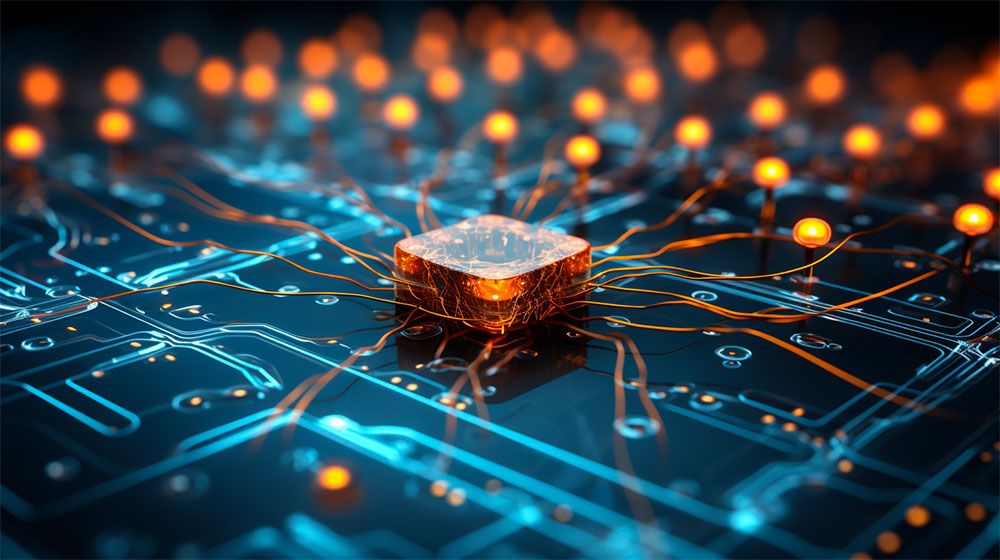
Uncovering the diverse and transformative applications of biological computing, let's shed light on how this cutting-edge technology is reshaping industries and revolutionising how we approach complex challenges, unveiling its potential in various fields.
Environmental Science: Climate Modeling, Ecosystem Analysis
Biological computing is proving to be a powerful tool for unravelling the complexities of our planet's ecosystems. Climate modelling, a critical aspect of understanding global climate patterns, involves processing vast amounts of meteorological and environmental data. Biological computing techniques, with their ability to handle large-scale computations, enhance climate models' accuracy and predictive capabilities. Scientists can simulate climate scenarios, predict weather patterns, and assess the impact of human activities on the environment. Moreover, biological computing might significantly aid in ecosystem analysis, enabling researchers to study biodiversity, track wildlife migration patterns, and analyse ecological interactions.
Data Storage: DNA Data Storage and Its Advantages
Traditional data storage methods face significant challenges, including limited scalability and vulnerability to deterioration. Biological computing introduces a groundbreaking solution: DNA data storage. DNA molecules, with their exceptional stability and information-carrying capacity, offer an unprecedented solution for long-term data storage. Researchers encode digital information into DNA sequences, creating a robust and compact storage medium. Unlike conventional storage devices, DNA data storage has the potential to preserve vast amounts of information for thousands of years, making it ideal for archival purposes. This innovative approach not only addresses the growing demand for data storage but also ensures the preservation of knowledge, cultural heritage, and scientific advancements for future generations. With biological computing, humanity is on the brink of a data storage revolution that could redefine how we preserve and access information.
Biological Computing Case Studies
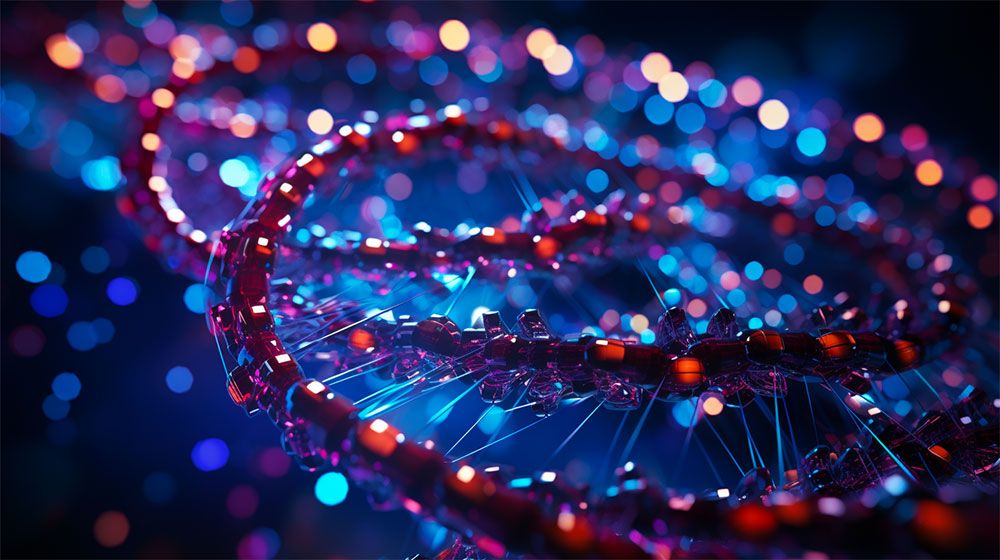
Biological computing, a field at the cutting edge of science and technology, is making significant strides in solving real-world challenges. Through case studies and practical applications, we can witness the tangible impact of biological computing in various domains, demonstrating its transformative potential.
1. Healthcare Advancements through Genomic Analysis
One of the most compelling case studies involves the application of biological computing in genomics. Through leveraging advanced computational techniques, scientists can analyse vast genomic datasets to identify genetic variations associated with diseases.
For instance, researchers have started researching biological computing to unravel the genomic basis of rare genetic disorders, enabling precise diagnoses and tailored treatment plans for affected individuals. In addition, genomic analysis powered by biological computing has played a pivotal role in cancer research. By studying tumour genomes, researchers can identify specific genetic mutations, leading to the development of targeted therapies. These breakthroughs in healthcare showcase the invaluable contributions of biological computing in advancing medical knowledge and improving patient outcomes.
Illumina, Inc. is a leading company in the field of genomics, providing sequencing and array-based solutions for genomic research. Their technologies enable researchers to analyse genetic variations associated with diseases, contributing to advancements in personalised medicine and targeted therapies.
2. Environmental Conservation through Biodiversity Monitoring
Biological computing is instrumental in environmental conservation efforts, particularly in biodiversity monitoring. Conservationists utilise advanced algorithms to process ecological data, such as species distribution patterns and habitat preferences. Using biological computing techniques, researchers can track endangered species, assess ecosystem health, and identify conservation priorities. For example, in wildlife conservation, biological computing algorithms analyse camera trap images to estimate animal populations and monitor wildlife behaviour. These insights aid conservationists in making informed decisions and guiding initiatives to protect vulnerable species and preserve biodiversity.
3. Sustainable Agriculture and Crop Improvement:
Biological computing is revolutionising agriculture by optimising crop cultivation and ensuring food security. Through computational modelling, researchers simulate plant growth processes, environmental conditions, and pest interactions. With the analysis of this data, agricultural scientists can design resilient crop varieties that are better adapted to changing climate conditions and resistant to pests and diseases.
Biological computing techniques have been instrumental in crop improvement programs, leading to genetically modified crops with enhanced nutritional value, improved yield, and reduced environmental impact. These innovations are pivotal in ensuring sustainable agriculture practices, addressing global food security challenges, and mitigating the impact of climate change on crop production.
Monsanto, now integrated into Bayer, was a major player in agricultural biotechnology. The company focused on genetically modified crops, using biological computing and computational modelling to enhance crop yield, develop pest-resistant varieties, and promote sustainable agricultural practices.
Challenges and Ethical Considerations in Biological Computing
Addressing challenges and ethical considerations in biological computing is crucial for responsible implementation. Here, we delve into some of these challenges, shedding light on the complexities accompanying astounding advancements in biological computing.
Technical Challenges: Scalability, Reliability, and Efficiency
Biological computing's immense potential is accompanied by technical challenges that necessitate innovative solutions. Scalability, the ability to handle vast biological data efficiently, poses a significant hurdle. As datasets grow, researchers grapple with developing computational methods capable of processing this information in real time. Ensuring the reliability of biological computing systems is another concern. Reliable algorithms are crucial, especially in healthcare and drug discovery, where accuracy is paramount. The intricate nature of biological systems requires robust algorithms that consistently provide dependable results. Also, optimising the efficiency of biological computing processes, both in terms of time and resources, remains a challenge. The complexity of computational tasks necessitates finding ways to enhance the efficiency of biological algorithms, ensuring their practical applicability.
Ethical Implications: Privacy Concerns, Genetic Engineering, Biosecurity
The rapid advancement of biological computing raises ethical concerns that demand careful consideration. Privacy concerns arise in the context of genomic data, where analysis can unveil sensitive details about individuals and their families. Protecting this data against misuse and unauthorised access is a pressing ethical challenge. Genetic engineering, a fundamental aspect of biological computing, prompts ethical questions related to modifying living organisms.
The ethical implications of genetic engineering extend to both therapeutic applications and bioengineering for enhancement purposes, requiring robust ethical frameworks to guide responsible research practices. Lastly, biosecurity concerns emerge regarding the potential misuse of biological computing techniques for harmful purposes, such as bioterrorism or creating dangerous biological agents. Ensuring stringent biosecurity measures and international cooperation is essential to mitigate these risks and prevent malicious applications of biological computing technologies.
Regulatory Frameworks and International Cooperation
Addressing these challenges and ethical considerations necessitates the formulation of comprehensive regulatory frameworks. Regulations must encompass issues such as data privacy, genetic manipulation, and biosecurity, ensuring ethical principles and societal values guide research and applications. International cooperation is essential to harmonise regulatory standards and foster collaboration among nations, organisations, and research institutions. Ensuring the promotion of a global dialogue, regulatory frameworks can adapt to the rapid pace of technological innovation, facilitating the ethical and secure advancement of biological computing for the benefit of humanity.
Global Efforts and Initiatives
Efforts from various countries and organisations are underway to address these challenges. The National Institutes of Health (NIH) in the USA, the European Bioinformatics Institute (EBI) in Europe, and the Chinese National GeneBank (CNGB) in China are actively engaged in ethical guidelines development and international collaborations. Moreover, the World Health Organisation (WHO) is pivotal in global discussions concerning genetic research ethics. Organisations like the International Biosecurity and Biopreparedness Initiative for Science (IBBIS) collaborate internationally to enhance biosecurity measures. In addition, bioethics committees and research institutions worldwide evaluate the ethical implications of biological computing, providing valuable guidance to governments and organisations.
These global efforts reflect a shared commitment to ensuring that biological computing advances responsibly and ethically, aligning scientific progress with ethical principles and international cooperation. For the most recent and specific information regarding these efforts, consulting official sources of these organisations and institutions is recommended.
Future Prospects for Organisations: Predictions for the Future of Biological Computing

As biological computing is still in its nascent stages, making precise predictions about its future remains a challenge. However, recent research by Kevin Fulk from the Bauer College of Business Administration at the University of Houston, Texas, sheds light on significant developments. Despite the technology's early stage, this research highlights the following key points, offering valuable insights into the potential of biological computing:
1. Challenging the Limits of Moore’s Law
For decades, Moore's Law has been the guiding principle for computing advancements, predicting a steady increase in processing power. However, the pace of traditional chip design, as per Moore's Law, cannot continue indefinitely. The laws of physics impose constraints on silicon-based chips, and we are approaching their theoretical limits. Researchers predict that biological computing could offer a viable alternative, ushering in a new era where biological systems enhance computational capabilities, addressing the impending limitations of current designs.
2. Revolutionising Medicine Through Direct Interfacing
The potential of biological computing goes beyond traditional computational boundaries. The most promising aspect of this technology is its ability to directly interface with the chemical processes of the human body. Unlike silicon-based computers, biological computing offers a pathway for diagnosing and treating illnesses by interacting seamlessly with the body's processes. Experts anticipate a future where biological computers play a pivotal role in advancing medical treatments, enabling more effective disease diagnosis and personalised therapies.
3. Pioneering Alternative Paradigms
In a world where the limitations of silicon-based computing become increasingly apparent, alternative paradigms are essential. Biological computing, with its diverse forms and applications, emerges as a pioneering solution. By exploring biological systems, organisations can anticipate breakthroughs in drug discovery, healthcare, and environmental science. These innovations will redefine how we approach computational challenges, opening doors to unprecedented opportunities and discoveries.
As we move forward, integrating biological computing into our technological landscape offers a glimpse into a future where the boundaries of what we can achieve are pushed further than ever before. Utilising predictions and insights derived from cutting-edge research, organisations can position themselves to harness the transformative potential of biological computing, paving the way for a new era of innovation and progress.
Final Thoughts
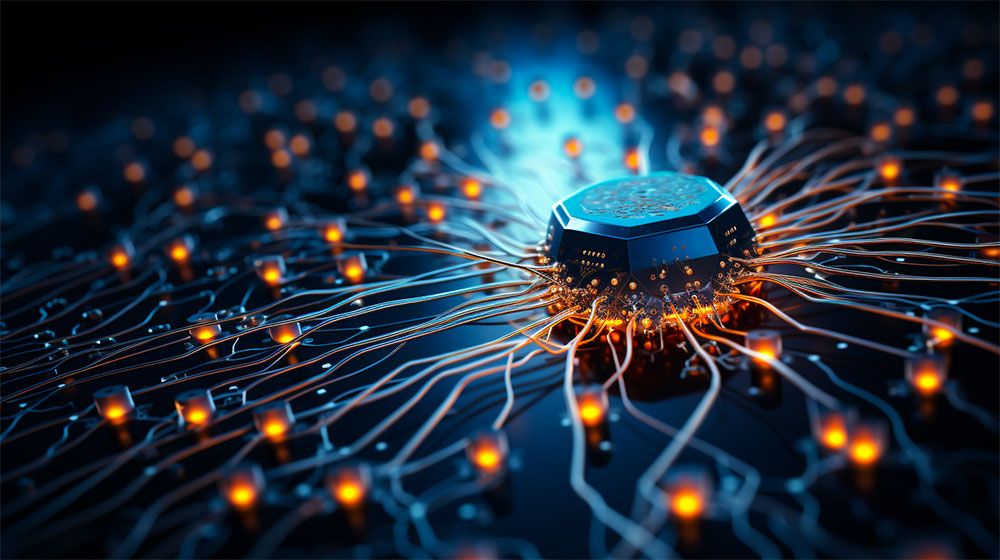
The fusion of biology and technology opens avenues of innovation previously deemed unimaginable. As we traverse this intersection of scientific disciplines, it becomes evident that the future holds limitless possibilities. The amalgamation of artificial intelligence and biological computing is poised to revolutionise data analysis, propelling us toward unprecedented discoveries. Quantum biology, with its promise of deciphering nature's quantum secrets, stands as a testament to our pursuit of understanding life at the most fundamental level.
The growth of DNA data storage reflects our ingenuity in harnessing the very fabric of life for storing knowledge, ensuring the preservation of our collective wisdom for generations to come. In healthcare, biological computing is not merely transforming diagnostics and treatments; it is ushering in an era of personalised medicine, where every individual's genetic makeup becomes a roadmap for tailored therapeutic interventions. In agriculture and environmental conservation, biological computing emerges as a stalwart ally, guiding sustainable practices and preserving the delicate balance of our ecosystems.
Yet, amid these advancements, ethical considerations remain paramount. The responsible use of biological computing demands a delicate balance between scientific exploration and ethical stewardship. Privacy concerns, genetic engineering ethics, and stringent biosecurity measures must be upheld to ensure our progress benefits humanity without compromising ethical standards.
As we embark on this transformative journey, collaboration and international cooperation will be key. Scientists, researchers, policymakers, and organisations worldwide must unite in the spirit of shared knowledge and ethical responsibility.
The future of biological computing is not just a scientific pursuit; it is a shared human endeavour, illuminating the path toward a future where technology and biology harmonise to enhance lives, preserve our planet, and unravel the mysteries of existence. As we stand at the nexus of possibility, let our actions be guided by wisdom, ethics, and a shared vision of a better, more enlightened world.
Images: Midjourney




